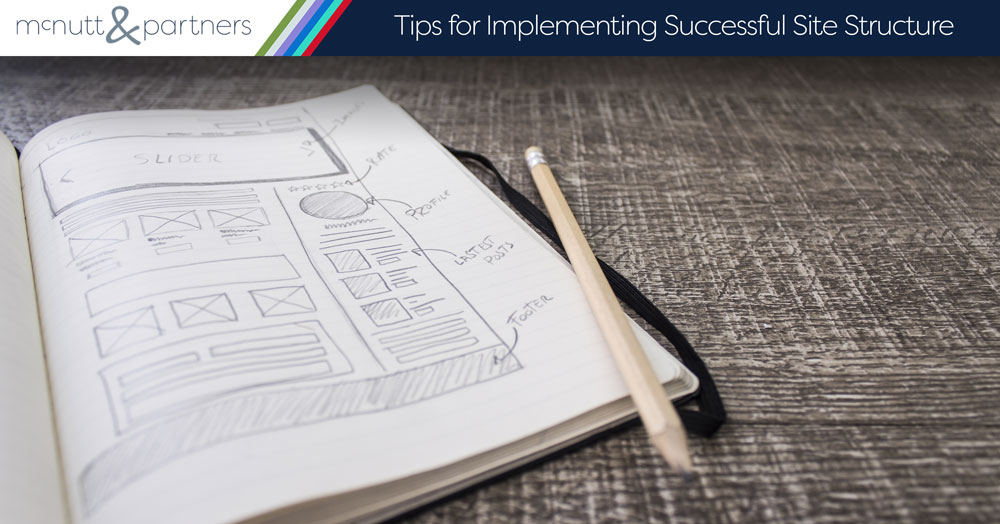When navigating through a grocery store, when hiking through a state park, or when taking a road trip, it helps to have signage providing you some sense of direction. When navigating a website, the concept is no different—for the sake of both your site visitors and search engines. Last week, we discussed the ways that website structure can work to your brand’s advantage. Now that you know why successful site structure is important, we’ll look at how exactly you can structure your site to reap the benefits of having a well-organized, well-designed website.
Use this guide for implementing successful site structure to ensure that your website is appealing to both your consumers and Google alike.
- Structure your site like a pyramid. In thinking about the structure of your site like a pyramid, your homepage would represent the top of the pyramid. Your home page would then branch out to include various categories and subcategories below it—expanding to a broad base that encompasses various pages, blogs, posts, etc.
- Divide pages into categories. Each of your pages, blog posts or product pages should be assigned a category as part of your site structure. An important part of implementing successful site structure is making sure that no one category contains significantly more content than another. The categories should be almost equally balanced, with no category exceeding twice the size of any other category.
- Define cornerstone content. Cornerstone content is the most important content on your site. If you are using a product like Yoast SEO, you will have an option to indicate which articles should be treated as cornerstone content. In addition to including content that reflects the overall mission of your business, cornerstone content should contain your most choice keywords. It is recommended that websites have a minimum of two cornerstone articles and a maximum of eight to 10.
- Incorporate internal linking structure. Internal linking means that each page on your site should link back to the pages on top of the pyramid, or, your home page. In turn, each page on the top of the pyramid should link to the subpages below it. Specifically, every page and blog post on your site should link back to cornerstone content that exists at the top of the pyramid. When you create internal links within your site, you are in essence showing search engines what content is related—and also what content is cornerstone content, which are the pages that will (hopefully) rank in search.
- Add taxonomies and tags. You have the ability to add taxonomies and tags to your content on the back end of your website through WordPress. Taxonomies are essentially the same as categories—they are hierarchical and create the pyramid structure—while tags are not. Tags indicate what type of content you are showing on your site, but they do not include the categories, subcategories and sub-subcategories that taxonomies do.
- Edit your site structure as needed. A successful site structure has a strong foundation, but is easily editable as your featured products and services may change. Any outdated or unused content (that you do not think will be relevant again) should be removed from your site. However, if the page you want to delete has valuable links to it, you should redirect the URL so you do not lose them. Part of implementing successful site structure is performing regular site maintenance by removing and adding pages as needed. If it shows that your site is displaying old content, it will be unappealing to both your consumers and search engines. Conversely, adding new tabs, categories and pages will keep your site content fresh and engaging to users.
Organization is key when crafting successful site structure. Not only will it pay off in terms of positive user engagement, but it will also make it easier for you to edit and for Google to sort content to rank highly in search.
Though this guide to successful site structure covers the basics, making sure your site is optimized can still be a complex process. Let the McNutt & Partners team of web design and SEO experts help you structure your brand’s website. Call us at 334-521-1010, or visit our contact page.

